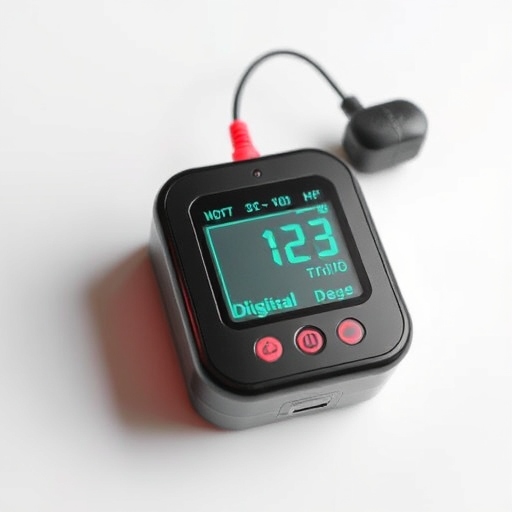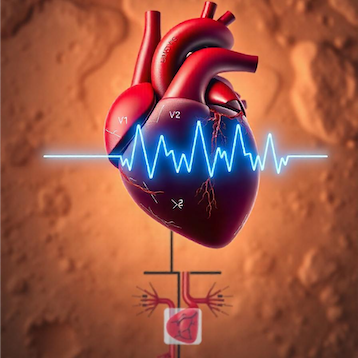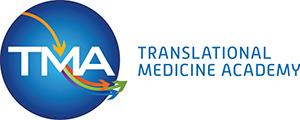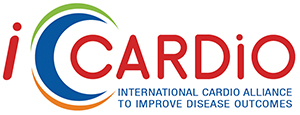Bibliometric analysis of cardiovascular disease research activity in the Arab world

Published: June 28, 2024
Abstract Views: 1507
PDF: 444
HTML: 0
HTML: 0
Publisher's note
All claims expressed in this article are solely those of the authors and do not necessarily represent those of their affiliated organizations, or those of the publisher, the editors and the reviewers. Any product that may be evaluated in this article or claim that may be made by its manufacturer is not guaranteed or endorsed by the publisher.
All claims expressed in this article are solely those of the authors and do not necessarily represent those of their affiliated organizations, or those of the publisher, the editors and the reviewers. Any product that may be evaluated in this article or claim that may be made by its manufacturer is not guaranteed or endorsed by the publisher.
Similar Articles
- Ralph Stephan von Bardeleben, Muhammad Shahzeb Khan, Martin Geyer, Tim Friede, Javed Butler, Monika Diek, Jutta Heinrich, Marius Placzek, Roberto Ferrari, William T. Abraham, Ottavio Alfieri, Angelo Auricchio, Antoni Bayes-Genis, John G.F. Cleland, Gerasimos Filippatos, Finn Gustafsson, Wilhelm Haverkamp, Malte Kelm, Karl-Heinz Kuck, Ulf Landmesser, Aldo P. Maggioni, Marco Metra, Vlasis Ninios, Mark C. Petrie, Tienush Rassaf, Frank Ruschitzka, Ulrich Schäfer, P. Christian Schulze, Konstantinos Spargias, Alec Vahanian, Jose Luis Zamorano, Andreas Zeiher, Mahir Karakas, Friedrich Koehler, Mitja Lainscak, Alper Öner, Nikolaos Mezilis, Efstratios K. Theofilogiannakos, Ilias Ninios, Michael Chrissoheris, Panagiota Kourkoveli, Konstantinos Papadopoulos, Grzegorz Smolka, Wojciech Wojakowski, Krzysztof Reczuch, Fausto J. Pinto, Łukasz Wiewiórka, Zbigniew Kalarus, Marianna Adamo, Evelyn Santiago-Vacas, Tobias Friedrich Ruf, Michael Gross, Joern Tongers, Gerd Hasenfuß, Wolfgang Schillinger, Piotr Ponikowski, Stefan D. Anker, Baseline echocardiographic characteristics of patients enrolled in the randomized investigation of MitraClip device in heart failure (RESHAPE HF-2) trial: comparison with COAPT and Mitra-FR , Global Cardiology: Vol. 2 No. 2 (2024)
- Eirini Flouda, Athena Stefanatou, Tinia Apergi, Intervention options: depression and cardiovascular disease during COVID-19 , Global Cardiology: Vol. 1 No. 1 (2023)
- Marwan M. Refaat, Nadim El Jamal, Hebah M. El-Rayess, Anthony Gebran, Amar M. Salam, The impact of diurnal fasting during Ramadan on patients with established cardiac disease: a systematic review , Global Cardiology: Vol. 2 No. 2 (2024)
- Maryanne Caruana, Miriam Gatt, Oscar Aquilina, Charles Savona Ventura, Victor Grech, Jane Somerville, The impact of maternal congenital heart disease on pregnancy outcomes in Malta: a retrospective study , Global Cardiology: Vol. 1 No. 1 (2023)
- Javed Butler, Sanjiv J. Shah, Melissa Magwire, Carlos Campos, Muhammad Shariq Usman, Anthony Hoovler, Anup Sabharwal, Barry A. Borlaug, Treatment pathways in patients with heart failure with preserved ejection fraction and obesity: perspectives from cardiology specialists and patients , Global Cardiology: Vol. 2 No. 2 (2024)
- Elias Tassoulas, Dimitrios Tasoulas, Christos Papaconstantinou, Ioannis Chlorogiannis, Prognostic factors and outcome in patients submitted into coronary artery bypass surgery with total arterial myocardial revascularization , Global Cardiology: Vol. 2 No. 4 (2024)
- Enrico Cerrato, Ilaria Meynet, Giorgio Quadri, Federico Giacobbe, Cristina Rolfo, Francesco Tomassini, Fabio Ferrari, Fabio Mariani, Luca Lo Savio, Matteo Bianco, Paola Destefanis, Alessia Luciano, Carol Gravinese, Emanuele Tizzani, Sara Giolitto, Antonella Corleto, Fabrizio D’Ascenzo, Umberto Barbero, Fernando Macaya, Javier Escaned, Roberto Pozzi, Ferdinando Varbella, Acute interventional management of spontaneous coronary artery dissection: case series and literature review , Global Cardiology: Vol. 2 No. 1 (2024)
- Maryanne Caruana, Philip Moons, Adrienne H. Kovacs, Koen Luyckx, Corina Thomet, Werner Budts, Maayke Sluman, Katrine Eriksen, Mikael Dellborg, Malin Berghammer, Bengt Johansson, Alexandra Soufi, Edward Callus, Victor Grech, Silke Apers, Quality of life in Maltese adults with congenital heart disease: a second look , Global Cardiology: Vol. 2 No. 1 (2024)
- Kamilu M. Karaye, Abdulrazaq G. Habib, Karen Sliwa, Epidemiology of peripartum cardiomyopathy in Africa , Global Cardiology: Vol. 2 No. 2 (2024)
- Sven Christopher Aland, Christoph Gertler, Hannah Leonie Bräunig, Timo Schröder, Frank Edelmann, Rolf Wachter, Christoph Herrmann-Lingen, Gerd Hasenfuß, Anja Sandek, Exercise capacity, iron deficiency and depressive symptoms in patients with asymptomatic chronic systolic heart failure , Global Cardiology: Vol. 2 No. 2 (2024)
You may also start an advanced similarity search for this article.

 https://doi.org/10.4081/cardio.2024.34
https://doi.org/10.4081/cardio.2024.34

















